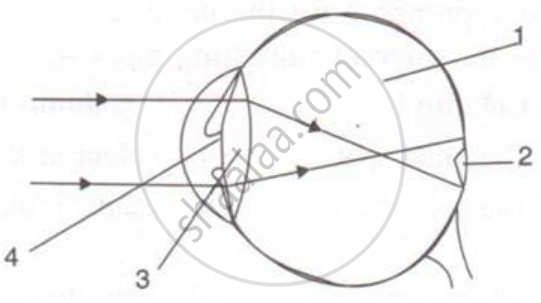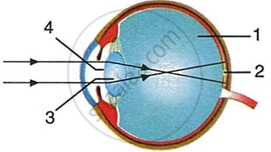Advertisements
Advertisements
Question
Name the common defects of the eye.
Solution
Common defects of the eye:
(i) Near or short-sightedness (Myopia)
(ii) Far or long-sightedness (Hypermetropia)
(iii) Astigmatism.
(iv) Presbyopia.
(v) Night blindness.
(vi) Colour blindness.
(vii) Squint.
(viii) Cataract.
APPEARS IN
RELATED QUESTIONS
In a Std. X class out of 40 students 10 students use spectacles, 2 students have positive power and 8 students have negative power of lenses in their spectacles.
Answer the following questions:
(1) What does the negative power indicate?
(2) What does the positive power indicate?
(3) Generally which type of spectacles do most of the students use?
(4) What defect of eyesight do most of the students suffer from?
(5) Give two possible reasons for the above defect.
Do you know that the corneal-impairment can be cured by replacing the defective cornea with the cornea of the donated eye? How and why should we organise groups to motivate the community members to donate their eyes after death?
What is the far point and near point of the human eye with normal vision?
A student is unable to see clearly the words written on the black board placed at a distance of approximately 3 m from him. Name the defect of vision the boy is suffering from. State the possible causes of this defect and explain the method of correcting it.
What is the other name for
myopia
Name the defect of vision in which the eye-lens loses its power of accommodation due to old age.
Name the defect of vision which can be corrected by a converging lens. Show clearly by a ray diagram how the lens corrects the defect.
Explain with the help of labelled ray diagram, the defect of vision called myopia and how it is corrected by a lens.
The near-point of a person suffering from hypermetropia is at 50 cm from his eye. What is the nature and power of the lens needed to correct this defect? (Assume that the near-point of the normal eye is 25 cm).
The near point of a long-sighted person is 50 cm from the eye.
(a) Can she see clearly an object at:
(i) a distance of 20 cm?
(ii) at infinity?
Choose the correct answer :
Presbyopia is a disease of _____________
Given below is a diagram depicting a defect of the human eye? Study the same and answer the question that follow :

Name the type of lens used to correct this eye defect.
Give Reason:
Deficiency of vitamin A causes night blindness.
Explain the Term: Cataract
Assertion: Myopia is the defect of vision in which a person cannot see distant objects clearly.
Reason: This due to eye-ball being too short.
Assertion: Concave mirrors are used as reflectors in torches, vehicle head lights and in search lights.
Reason: When an object is placed beyond the center of curvature of a concave mirror, the image formed is real and inverted.
Myopia may arise due to ____________.
Which of the following statement is correct?
Name the following:
Two kinds of accomodations.
Given alongside is a diagram depicting a defect of the human eye. Study the same and answer the questions that follow:
 |
- Name the defect shown in the diagram.
- Give two possible reasons for this defect.
- Name the parts labelled 1 to 4.
- Name the type of lens used to correct this eye defect.
- Draw a labelled diagram to show how the above mentioned defect is rectified using the lens named above.
